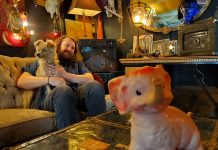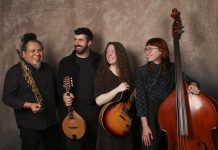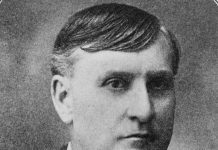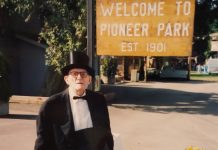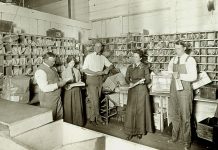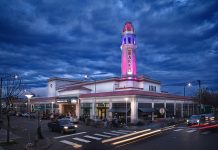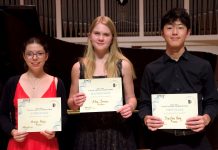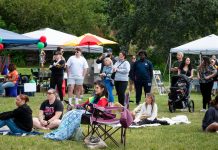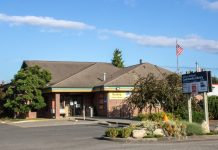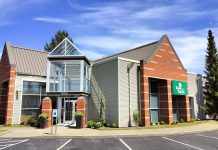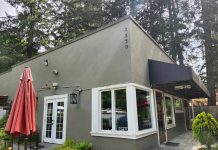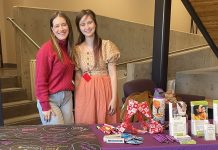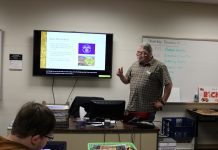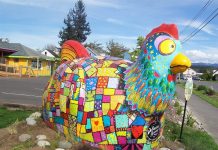As an artist, Ivan Colin strives to not repeat himself, and a quick look at his work shows his willingness to travel new paths. Split between large, outdoor murals, and smaller pieces on canvas, some of Colin’s creations appeal to a wide audience, and others feel much more personal. Most bring a graffiti style to mind, and some use strong, solid shapes while others hint at perpetual movement. The only real constants are bold, bright colors and an invitation to the viewer to interpret for themselves what’s being shown.
Colin is first-generation American, born to Mexican parents and raised in Napa, California. Like many artists, he enjoyed drawing as a child. But unlike many, he calls what he did “messing around,” and didn’t see art as a viable career path. He began to study visual arts in high school. “I saw a classmate in the back of the room drawing something, and I thought, ‘That looks like fun to do in class, and the final product is pretty cool,’” he says. “It was graffiti lettering, and I was really drawn to it.”
The graffiti look went well with his appreciation for street art and public art, which appealed to him because it didn’t require him to pay to enter a sterile building and stand in a plain white room staring at a wall. But rather than attracting negative attention by expressing himself through graffiti, he decided to take his inspiration into the studio, where he could take his time and produce a truer representation of his vision.
He was finding his way, but the resources available to him, especially at school, weren’t enough to show him a future in the arts. “I still enjoyed it, and I knew I was good at it and wasn’t going to stop,” he says. “But it wasn’t enough to make me think this is what I want to do [as a profession]. It wasn’t until college that I figured that out.”
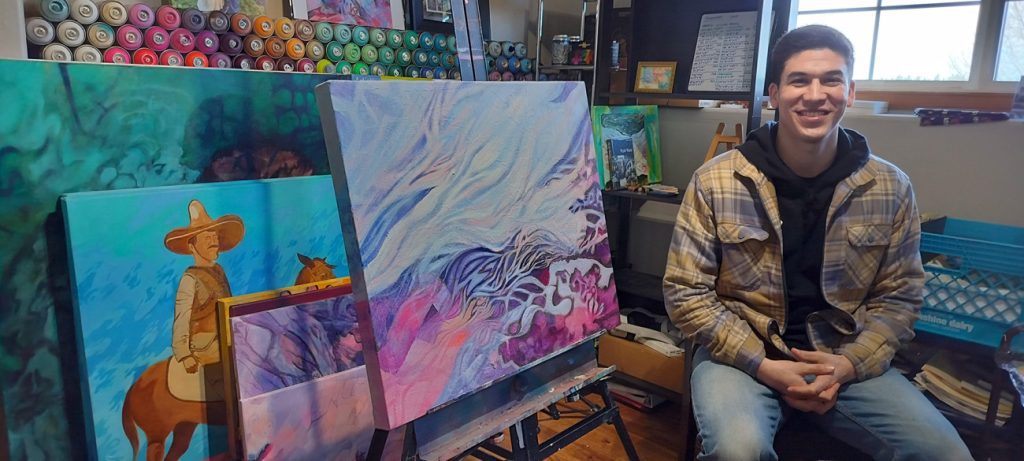
Turning a Corner in Oregon
Colin wanted to make his years at a university pay off, so he focused on business marketing at Linfield University in McMinnville, Oregon. When he realized that wasn’t feeding his soul, he took an art history course. Soon he was fully immersed in the studio art track, taking courses that exposed him to digital media, woodworking. mixed media, and more. Not only was he on the right track, but he knew what he wanted to do.
“It was part of our curriculum to try everything, so I touched a bit of each part of the visual arts realm,” he says. “I knew drawing was a timeless skill. Part of intelligence is being able to use a tool and craft with it, and I really appreciate that in our history of making art.”
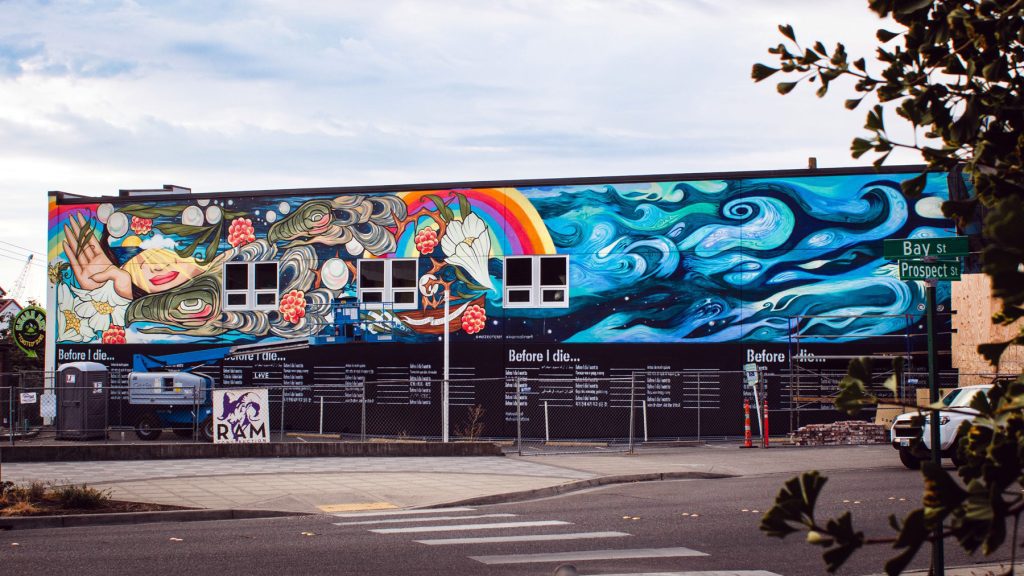
A Home in Bellingham
Outside of class, Colin was involved with another of his passions: playing soccer. When he graduated, he sent email inquiries to coaches up and down the West Coast, from California to Canada. Bellingham United invited him to try out for its semi-pro team, and he made the drive north. He still remembers driving down Holly Street and passing under the “Downtown Bellingham” sign that arches over the roadway. “It just felt right,” he says. “It wasn’t overwhelming, like Seattle or someplace like that. I knew I was following my intuition, and it was leading me to the right place.”
After several lengthy commutes the team invited him to join, and Colin became a Bellingham resident in 2017. As a Hammer — as members of the Bellingham United Football Club are known — Colin also got involved with Whatcom Sports and Recreation, a nonprofit that oversees athletic facilities and teams across Whatcom County. He has worked as a referee for them and coached soccer camps and afterschool programs, as well as blending his business acumen with his artistic skills as a graphic designer.
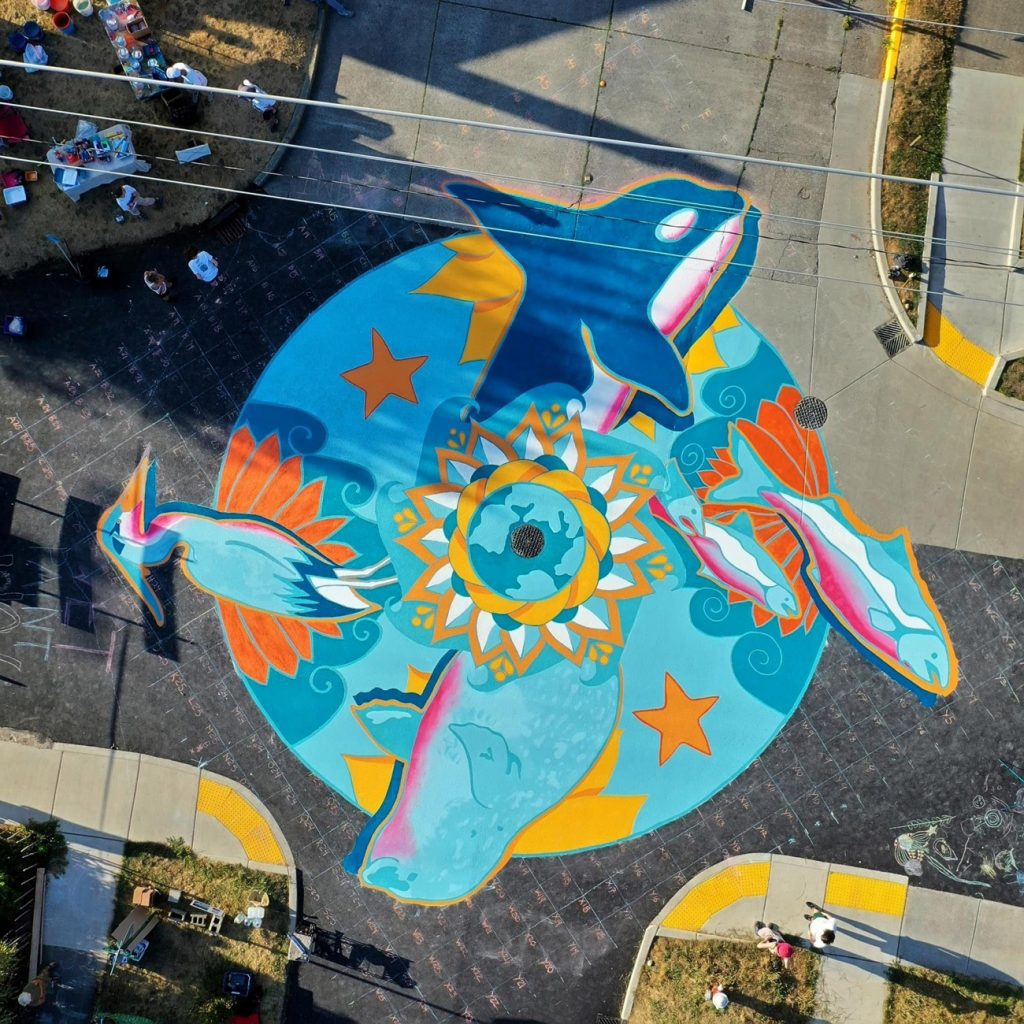
Going Public
But Colin has consistently been drawn to making art — and public art — whenever possible. He’s already made his mark by assisting with the large “Hope Project” mural at the intersection of Lynn and West North Streets, the “Rocket Building” mural at Holly and Bay Streets, Cob + Cork restaurant in Bow, and the alley behind 3Oms Yoga in downtown Bellingham. He will also soon paint a mural inside the new home of Opportunity Council, which will also feature works by Jason LaClair and KáaSháyee Kéet’aakw. Colin is actively looking for new opportunities to create public art and invites the public to contact him through his website and his Instagram page, where he shares photos of his projects.

Colin’s love for graffiti styles merges with his desire to create clean and purposeful art on canvas, and he’s produced a number of striking works meant to be hung indoors. While he sometimes mixes in a small amount of watercolors, oils or graphite, his works on canvas predominantly use acrylics. A practice of layering color on top of color leads to bold and eye-catching finished works and allows him to use brushes to create a sense of motion one might only expect from spray paints.
As far as subject matter, Colin starts in the abstract and allows his style to develop, rather than pushing towards themes and motifs. “I pull from master artists and learn from them, but when I see their art, I don’t feel it looks like mine,” he says. “With what I’m doing right now, I feel like I’m paving a path.”
Colin thinks of avant-garde as a whole philosophy of exploring unknown territory. “For me, to paint something that’s already been painted, to do something that’s already been done, that seems very redundant,” he says. “For my studio practice — the stuff that’s going to nourish me — my aim is not to tell the viewer what to see, rather allow the work to suggest. The viewer is allowed their own interpretation of what the work is about.”

